Human Flower Project
Westway—What Emerges
In homage to J.G. Ballard, John Levett explores London’s Westway thoroughfare, dereliction making way for radicalism (or at least freedom).
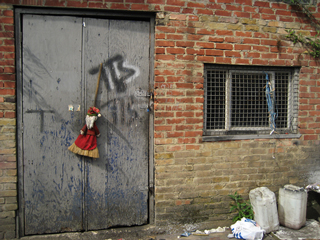
Doll on a door below London’s Westway
Essay and photos by John Levett
If you could have been any writer and written what they wrote who would you choose?
It may be the kind of people I used to (still do) meet up with, but the choice has usually been ‘cult’ as if making the cult choice confers some measure of cultness upon the chooser. As soon as I got the hang of this self-anointment round about 1960 I couldn’t get enough. I stayed well off the pace for a couple of years—just couldn’t get hold of the ‘next-big-cult-writer’ technique. ‘Camus? How retentive.” “Sartre? How juvenile.” “Grass? How bourgeois.” “Golding? How petty bourgeois.” “Burgess? How neo-fascist.” “Lessing? Your mother’s a shop-keeper isn’t she?” A hard day’s night work was the getting of radical credibility.
Then I found Better Books in Charing Cross Road (just upwind from where Helene Hanff found her own fave bookshop at number 84 ). Bob Cobbing was (I think) the manager there for a while & Jeff Nuttall (I think) was his aider and abetter and much high-jinks did they get up to. They had radical credibility and much cult too. Bob and Jeff’s poetry did for starters; B.S. Johnson followed as did Christopher Logue, The Children of Albion, Alfred Jarry, Antonin Artaud & anyone I’d never heard mentioned in conversations. It never mattered about understanding them; familiarity was all plus fitting into the frayed pocket in fine and dandy fashion. I was still the grocer’s son but I’d got the titles. Then came J.G. Ballard.
Ballard stayed. I think I came to him via Yevgeny Zamyatin & We which combination must have come from Orwell. I believe it was through his short stories that I became hooked on Ballard—“The Wind From Nowhere” stays in my mind. As I recall it wasn’t until the ‘70s that Ballard took flight in public consciousness (much like Philip K Dick was to do in the ‘80s). The pricking of the long post-war boom and the consumerist beano that the ‘60s had become ushered in a decade in the UK of power cuts, strikes, clashes with fascist groups, Rock Against Racism, repression in Northern Ireland and bombings on the mainland. Ballard’s ‘science fiction of the near future’ suited the common consciousness.
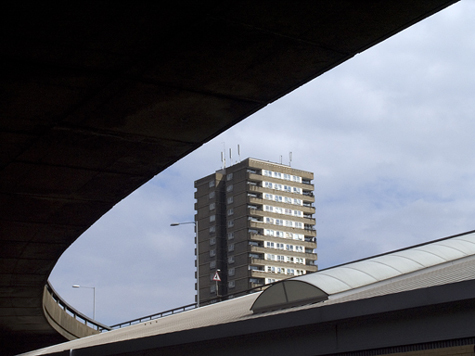
It was easy to see why. It seemed that the city was falling apart—the urban motorway dividing (physically) and demolishing (physically and psychologically) traditional communities; the emerging decline, detestation and destruction of high-rise public housing; the failure of local authorities to fulfill basic responsibilities for health and welfare within neighbourhoods; inflation, declining real wages, public sector cuts—even the sky seemed a permanent grey.
Ballard’s fiction fitted. So did The Clash. Jon Savage in an article called ‘Punk London’ published in the London Evening Standard, 1991, recalls the painted ‘The Clash’ on a pillar supporting the Westway flyover just as it leaves Harrow Road and swerves west towards Westbourne Park. Punk and Ballard fitted too—‘Westway to the World.’ Photography followed.
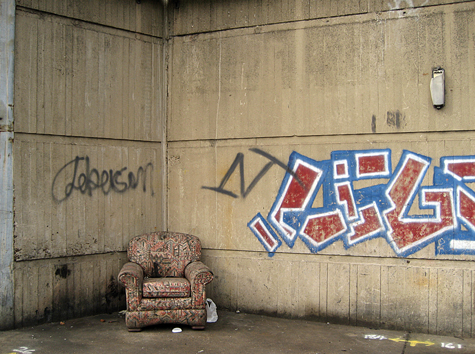
Many photographers of my acquaintance have taken inspiration from Ballard. Often it’s the immediacy of his writing—the city location, the urban labyrinth, the graffito, the concrete slab, highrise block, drowning city—raising the common to the heroic, the mundane to the sinister, the wasteland to the prison. Often it’s an attempt to image relationships and represent the economic, governmental and corporate manipulation of space and individual. Sometimes the photographer seeks to interpret last week’s near history as future signal. In these explorations the Westway features greatly.
The Westway was built between 1964 and 1970. It starts on Euston Road just up from Kings Cross & St. Pancras stations and stretches to White City and onto Western Avenue. It is a concrete elevated motorway, not as brutal nor as extensively divisive as those of Robert Moses but in a similar tradition. There were plans at one time during the 1970s & ‘80s to construct a ‘box’ of elevated expressways through central London. Westway was, it seems, enough to convince otherwise; we settled for queues and congestion on a human scale.
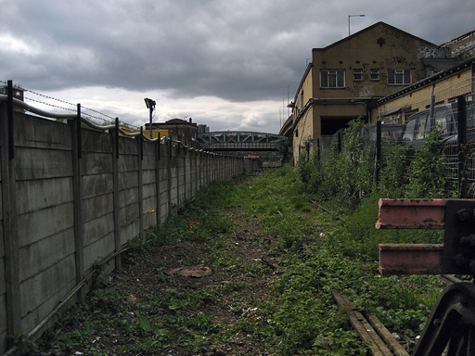
I recently began a new project on the Westway. Currently it involves walking its length (I’ve got as far as White City) and seeing what emerges, some theme. What always does emerge on these excursions along trunk roads is the space between things.
Authority (real and assumed) in modern Britain hates unsupervised, unclassified, unregulated spaces in the public domain. All manner of unsupervised, unclassified and unregulated activities might occur—the common people might get the idea that they can create something themselves, parties might happen, gatherings gather, children might be seen playing and building stuff, adults might huddle, picnickers scoff home-made sandwiches, tents could be raised, spontaneous happenings happen. End of civilisation.
But there are spaces under the Westway and usefully used they are.
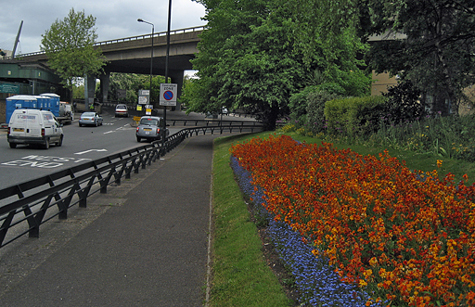
A traffic island near the start of Harrow Road looks fun. I lunched there. It takes a swift sprint across the traffic to get to it but it’s uncongested once you make it. It’s maintained; against all odds it survives fumes; no litter, no dog crap, it traps the sun, gives shelter from rain. Taking a broad sweep of it on leaving I can recognize a touch of the ‘civic pride’ trope that used to (still does) blight townships throughout the kingdom—the hanging-basket, petunia-bedded, geranium-swamped, flowered-clock-face, fuscia-invaded town centre of ‘Britain in Bloom.’ Has anyone ever thought of planting climbers under urban thoroughfares in anticipation of results?
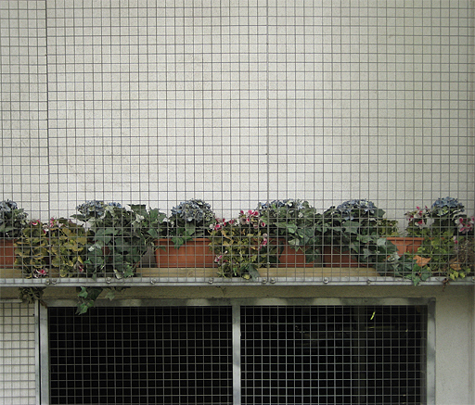
Near Paddington Station taxi maintenance takes the space. There used to be spaces like this in every town & city. Small spaces, spaces that nobody else needed, spaces that got left off the plan. They’re spaces that anyone in the Majority World knows how to use; outside the corporate plan, not yet privatised, no value-added yet, available to the enterprising, available to those outside the Health and Safety tent. We’re not supposed to have these anymore. Set up business on a street corner and a jobsworth won’t be two minutes away.
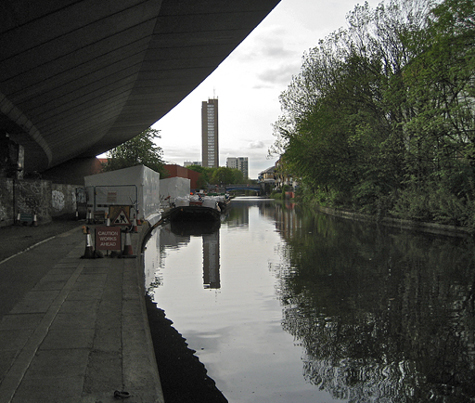
A river runs through it. A canal actually. A lot of London’s canals have gone the way of gentrification but good has accompanied it: there’s more walking space away from traffic; many towpaths now accommodate cycle paths; old species of plant have emerged; wildlife has proliferated; quality of life has been added to.
Play areas, small markets, convenience stores crop up; pay-for-the-day parking alongside parkland. What strikes me is that opportunities get missed. The spaces underneath bridges, flyovers, elevated expressways are infrequently seen as available spaces. Urban space is rare and expensive; given design history and the legacy of post-war architectural history it strikes me as a commonly missed chance that much can be created there beyond the occasional infill. I like concrete in buildings; I like its authenticity as a building material; I like its malleability; I like its resistance to the extension of tradition when tradition becomes no more than sanctifying the past and creating dogma from it. Concrete buildings work and fail to work just like any building material; they fail in the constructions of the jobbing builder and work in the constructions of the sympathetic architect. Denys Lasdun understood concrete, Ove Arup too.
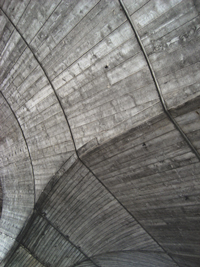 While I was scanning through some recent stuff from the Westway detour I wondered why concrete is rarely seen as a gardening material. Geoffrey Jellicoe wasn’t afraid of it. He designed a roof garden for a store in Guildford in Surrey in the mid-‘50s. Thomas Church in California, Robert Burle Marx (I think) in Rio and British architects working in the Festival of Britain in 1951 had all been influenced by the modern movement & incorporated concrete. The gardens at Highpoint (1938) in Highgate and that in High and Over (1934) in Amersham extended the concrete of the building, and St. Ann’s Hill in Surrey by Raymond McGrath allows the concrete to work in its garden. Serge Chermayeff’s Bentley Wood doesn’t finesse its concrete content; the garden would have worked equally successfully had it done so.
While I was scanning through some recent stuff from the Westway detour I wondered why concrete is rarely seen as a gardening material. Geoffrey Jellicoe wasn’t afraid of it. He designed a roof garden for a store in Guildford in Surrey in the mid-‘50s. Thomas Church in California, Robert Burle Marx (I think) in Rio and British architects working in the Festival of Britain in 1951 had all been influenced by the modern movement & incorporated concrete. The gardens at Highpoint (1938) in Highgate and that in High and Over (1934) in Amersham extended the concrete of the building, and St. Ann’s Hill in Surrey by Raymond McGrath allows the concrete to work in its garden. Serge Chermayeff’s Bentley Wood doesn’t finesse its concrete content; the garden would have worked equally successfully had it done so.
A failure of nerve? In whom—architects or patrons? I think that concrete can be unforgiving without vision and nerve. Lasdun had both and fashioned the material accordingly; unfortunately he wasn’t a gardener. Too often plantings have been used to ‘soften,’ ‘humanize,’ ‘compensate for’ the confrontation that concrete can represent. ‘Cover it,’ ‘paint it,’ ‘replace it’ rather than ‘use it.’ Christopher Tunnard was the author of a collection of articles called Gardens in the Modern Landscape published in 1938 (which I’ve only ever seen once) which had illustrations by Gordon Cullen; it seemed there that the idea of ‘architectural plants’ and plants as part of architectural design took a modernist slant. Shame it got lost.
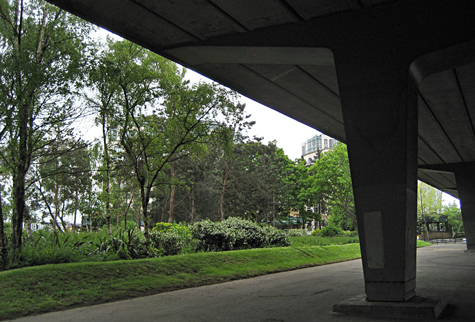
Would they work under Westway? Has it been tried? Yes. Maxilla Gardens and Portobello Green were landscaped; nursery, greenhouse and a scented garden are built under the Westway roundabout along with a wildlife area well supported by local schools—ten acres of public space reclaimed, laid, maintained. There’s a community that has interest in what goes on under Westway. My mind drifts back to the long-forgotten International Garden Festival in Liverpool in 1984, the Thatcher government’s response to the Toxteth riots. To Jane Brown it was a theme park diverting the eye from the dereliction of Britain’s inner cities. It was also a lark for a short while before getting back to dereliction. Worse could happen under Westway but there’s no sign of ‘worse’ yet.

